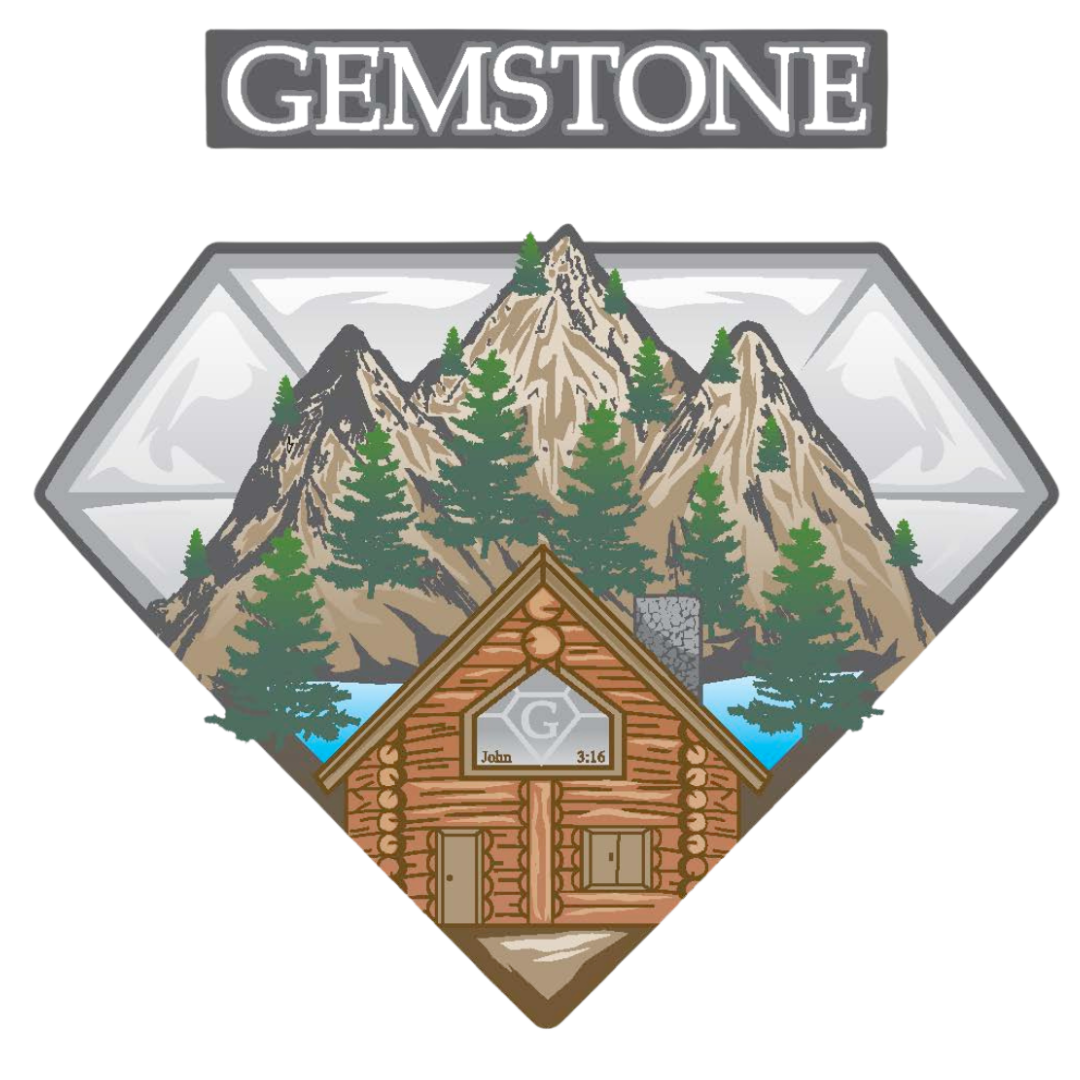GemStone Construction Blog
Should You Build Your Log Cabin in Winter or Summer?
August 28, 2025 | Gemstone Construction | Sacramento, CA | USA
The season you choose sets the tone for everything that follows. It shapes when trucks can reach the pad, how fast concrete gains strength, and whether stain flashes too quickly on a hot wall or dries smoothly in a cool breeze. Sacramento has its own rhythm with wet months and long dry stretches, but the core ideas in this guide help in other regions too. Think of this as a side by side look at what changes with the calendar and what stays the same, so your plan feels steady no matter where you break ground.
Start with the land you have, then map the work to the weather you expect. Early access, a solid slab plan, and simple storage for materials will carry you through both heat and rain. In our area, rain tends to cluster in late fall through early spring, while summer brings dry soil and long days. Other regions flip the script, with summer storms or winter deep freezes. Either way, the steps are the same. Pick the window that best fits your scope and crew, and you will nudge your project toward the best season log home build for your site. If you are not sure, your log home builder Sacramento should be able to guide the way.
Winter vs Summer at a glance in Sacramento and beyond
Sacramento’s long dry season usually means easier grading and fewer rain delays, while winter brings cooler temps that can be kind to crews and to certain materials if the ground stays firm. In snowy or very wet regions, winter often slows dirt work yet can be just right for indoor tasks once the shell is up. The key is to match each phase to a realistic weather window. If you are pouring a slab, cool mornings are your friend. If you are hauling heavy loads to a raw ridge, dry ground is worth its weight in gold. Local climate pages that post normals for temperature and rain help you plan around the averages and set a smart pace for your schedule.
This season talk is not just theory. Weather affects drying, curing, and comfort. Concrete wants protection from fast drying winds in summer and from cold ground in winter. Stain and sealers care about surface temperature more than the page on the calendar. Crews work better with shade and water during heat waves and appreciate wind breaks and steady footing when cold fronts slide through. Californians will recognize the pattern of crisp mornings and hot afternoons. Folks building in the Rockies or the Midwest can swap in their own local norms and still use the same planning moves. The goal is not to chase a perfect month. It is to sequence tasks so each one lands in a fair weather window that keeps quality high and rework low.
Weather windows that matter most
Grading, trucking, and driveway prep like dry ground. When the soil is firm, rock stays in place, ruts do not appear, and heavy deliveries hit their marks. Concrete is a little different. It prefers steady conditions, not extremes. In hot stretches, mixes can lose slump fast and surface moisture can flash away before finishing is complete. In cold snaps, low ground temps slow hydration and can create a strong surface over a weak base if protection is not used. Industry guidance explains how to avoid both problems with water control, wind breaks, sun timing, and insulation when needed. Those same ideas work in Phoenix, Portland, or Placer County, because cement chemistry is the same everywhere.
Exterior finishing deserves its own window. Stains and clear coats want a clean, dry surface and a sweet spot of temperature and shade. On a blazing August afternoon, a south wall can heat up and make finish flash before it can level. In late fall, a cool, shaded morning can help the work flow and keep lap marks away, as long as the air stays dry enough. Wood science notes that moisture content and surface temperature drive success more than the month. That is why builders often chase shade bands around a cabin and time walls to follow the daylight without fighting it.
Foundations first: dirt, drainage, and concrete by season
A smooth build starts with access that holds up. In summer, dust control and road wear lead the conversation. In winter, mud control and erosion take the stage. Both seasons ask for base rock sized for the loads you expect, a clear route with turnouts, and a simple plan to handle storm water so the path does not wash out. If your parcel still lacks a driveway or meter, take a minute to review remote site access notes before trucks roll. A short list for path, turnouts, and temporary power keeps every trade moving and calms the whole job.
Concrete cares about ground prep in any month. In heat, shade and water mist at the right moments help manage evaporation so finishing stays on pace. In cold, blankets and wind breaks help keep temperatures in the target range until strength builds. National ready mix bulletins sum up the basics: control temperature and moisture so hydration can do its work, especially on the first day. Federal highway guidance echoes the same idea and reminds crews that curing is a process, not just a word on the ticket. These are simple tools, but they turn a weather risk into an ordinary pour that passes inspection and supports the home for decades.
Soil moisture, mud control, and erosion
Even in a dry summer, a quick thunderstorm can turn a loose path into slipper clay. That is why crews use compacted lifts and rock that locks together, not just a thin sprinkle over dust. In the rainy months, mats across soft spots and silt socks around drains keep the pad stable and protect the creek below. Good erosion control saves more than dirt. It saves time by keeping inspectors happy and deliveries on their normal routes. When the path feels easy to drive, everyone shows up calm and ready to work, which is the quiet victory you want.
Drainage around the foundation is a year round task. Splash lines form even in small storms and can erode the edge of fresh backfill if downspouts and diverters are missing. A simple plan that routes water off the pad, around the home, and toward a stable outlet pays for itself in both seasons. In dry months it reduces dust and keeps soil from loosening under tires. In wet months it protects trenches and keeps the footing line clean. When you pair that with a clear step by step build path, inspections move smoothly and the schedule holds its shape.
Logs, finishes, and moisture management
Logs are wood, and wood breathes with the seasons. The trick is to keep moisture content in the healthy range and to avoid fast swings. Shade, airflow, and covers make that much easier. In cooler weather, slower drying can be a win for some finishes because the film levels before it sets. In hot weather, the same film may need more shade and quicker passes to avoid lap lines. Research from the national wood laboratory calls out target moisture ranges for exterior and interior uses and reminds us that conditions inside a heated home differ from a porch beam. Those charts are handy when you are picking finish timing and deciding how to stage materials on the pad.
Stain scheduling earns a little extra thought. Many products work best when the surface is not too hot and the air is not too wet. That is why shoulder seasons (mild fall and spring periods when weather is prime for construction work) can shine for exterior coatings. In Sacramento, early mornings in spring and fall often hit the sweet spot where walls feel cool to the touch and a light breeze helps solvents leave at the right pace. If you are building in a humid region, swap in a time of day with lower humidity, even if that means late morning instead of dawn. The core idea is the same. Choose a window where the wall is comfortable to touch with your palm. Your finish will thank you, and so will your future self.
Inspections, deliveries, and neighbor impact
Inspectors look for the same core items in every season. What changes is how easy it is to see markings, reach the pad, and walk the site safely. In winter rain, dust is not a problem but footing can be slick, so crews keep gravel fresh and lay mats across the soft spots. In summer heat, visibility is perfect but glare and high temps slow the pace, so shade tents and water stations keep the team sharp. None of this is complicated. It is simply the kind of planning that keeps people safe and calendars steady while walls go up.
Deliveries benefit from clear daylight and good routes in any month. Cement trucks want solid base and turnouts. Lumber prefers a level drop zone with room to sort and stage. Neighbors appreciate quiet starts and well swept road edges. If your parcel is still raw, keep that access plan in front of you, and borrow ideas from earlier notes on log home remote access for the first week of setup. A tidy path, a real address marker, and a plan for temporary power do more for schedule and goodwill than most owners expect.
Utility scheduling and temporary power
Temporary power is a small thing that feels big once lights come on and tools plug in without a generator. Utilities post clear rules for temporary panels and permanent sets, and those rules help you pick panel locations and conduit routes before the electrician shows up. In the Sacramento area, the state heat program also reminds everyone that shade, water, and rest matter during warm spells. Those simple habits protect crews and keep afternoon inspections productive when the mercury climbs. The same thinking helps in Texas and Tennessee, because people are people wherever you build.
When storms stack up in winter, inspections can slip a day here and there, but a well organized set of photos and tidy labeling keeps the process moving. When heat stacks up in summer, early day walks can earn the green tag before the hottest hours. If your region sees seasonal fire smoke, consider morning slots for deliveries and inspections when air quality is typically better. In other words, use the day in a smart way and let the season work for you instead of against you.
Budget and timeline: what really changes with the calendar
Costs move a little with the seasons, but not always the way people think. In summer, you may spend more time on dust control, early pour schedules, and shade for crews. In winter, you may spend on blankets, wind breaks, and a little extra rock to keep the path firm. These are measured adjustments, not wild swings. The bigger budget drivers are design clarity, permit readiness, and access that holds up through the whole job. A clean set of drawings and submittals, a solid driveway plan, and a step by step build path will save more money than trying to pick a single magic month for the entire build.
A smart sequence also reduces stress. Put weather sensitive tasks into the friendliest window for your area. Save interior push work for when the shell is tight and the forecast is fussy. Bundle inspections so the team can prep once and pass cleanly. If you like to see a short punch list in your planner, review common slow downs from past projects and avoid them this time. Owners who study common mistakes before they start often shave weeks off their build because they dodge the traps that trip up first timers. That is how you land the best result and quietly hit the best season log home build for your site and scope.
Common slip ups to avoid
Rushing dirt work is a year round mistake. A thin sprinkle of base rock over dust will not hold a concrete truck in July or January. Take the time to compact real lifts and shape a crown so water leaves the drive. The second misstep is ignoring finish windows. Stain will not level on a hot wall, and it will not bond well to a wet one. Touch the surface, check the breeze, and pick a time when the wall feels comfortable in your hand. The third is skipping photo records for inspections. Five minutes with a phone can save a half day if a review needs a second look later.
There is also the trap of treating every task like a summer task. Winter work needs protection and patience. Summer work needs shade and hydration. Both need a calm plan. Think about people as much as materials. A rested crew makes better cuts, cleaner joints, and safer choices. A protected site keeps your pad firm and your mood steady. It is not fancy. It is the craft of building done well in any season.
Decision guide: pick your season in three steps
First, look at your land and access. If the path is soft most of the winter, plan grading and heavy trucking for the dry months. If summer smoke or heat is the main concern, front load exterior work in spring and fall and save interior pushes for the warmest weeks. Second, match your scope to likely weather windows. Pour slabs and set foundations in cooler mornings, even in summer. Save finish coats for calm, shaded periods. Third, lock comfort and energy choices early so the install windows line up with your schedule and the gear you want is available. That one move protects quality and avoids long waits.
Tie those steps to regular check ins with your Sacramento log home builder. In Sacramento, a week can jump from cool mornings to triple digit afternoons, and a quick calendar tweak can save a pour or a stain day. In a cold winter state, a snap can arrive fast and leave as quickly, so having blankets and wind breaks on hand keeps the schedule from slipping. The best plan is flexible on day to day timing and firm on quality. Follow that rule and you are on your way to the best season log home build for your lot, budget, and timeline.
FAQ — winter versus summer build questions people ask most
Is it cheaper to build in winter or summer in California, or does it even out?
Season costs often balance when you plan well. Summer brings long days and dry soil, which help grading and access, but hot spells can slow crews and require early concrete pours, shade tents, and extra dust control. Winter can lower heat stress and make some finishing tasks easier, yet it asks for blankets, wind breaks, and tighter erosion control when storms roll through. What really moves the budget is not the month. It is the level of planning. A clean access route, complete drawings, and ready submittals save more dollars than chasing a single month on the calendar. In short, pick the season that best fits your scope and protect the weather sensitive items with simple tools. That simple approach keeps your spend steady while quality stays high.
Can you pour a slab or foundation in winter without problems?
Yes, as long as you keep temperatures in a friendly range and protect the concrete from fast cooling and freezing. National guidance explains that newly placed concrete needs moisture and temperature control to gain the strength you expect. In cool weather that usually means warming the mix water, sheltering the pour from wind, covering with blankets after finishing, and keeping the surface moist so hydration can continue. The goal is a steady cure, not a hot cure. These steps are not exotic, and crews use them every winter in many states. Follow them, and your slab can develop strong, even strength from top to bottom and be ready for framing on the normal timeline.
How hot is too hot to pour or finish concrete in Sacramento?
Concrete does not love extremes. Hot weather in the field is a mix of high air temperature, warm concrete, low humidity, and wind. That combo can make moisture leave the surface too fast, which leads to crusting and early set before finishing is complete. The fix is to place earlier in the day, cool ingredients when practical, reduce wind at the surface, and use proper curing so the slab does not dry out. Industry bulletins outline these simple moves and explain why they work. In plain words, control the pace of drying and you control the quality of the finish. Sacramento readers know summer can run hot, but a dawn pour with shade and good curing can hit the same quality mark as a mild spring morning.
When is the best time to stain or seal exterior log walls?
Pick a time when the wall is clean, dry, and not hot to the touch. Many products list a surface temperature range and a humidity range. Aim for the middle of those ranges rather than the edge. In cooler months, watch for dew and give walls time to dry before coating. In hotter months, chase the shade as it moves around the cabin so the finish has a chance to level. Wood science research reminds us that the moisture content of the wood matters as much as the air that day, so store materials under cover and let new wood come to a stable moisture level before coating. These small habits save rework and keep the finish looking fresh longer.
Wrap up
There is no single month that wins for everyone. What wins is a plan that fits your land and lines up tasks with fair weather windows. Dry ground helps with trucking and grading. Cool mornings help with concrete and sealing. Good access and clear drawings help in every month of the year. If you want help mapping the steps from first site walk to final touch ups, our team is happy to lay out a clear path that fits your life and your lot.
Ready to choose your season?
Your build does not have to wait for a perfect month. It needs a smart plan and a team that works with the weather, not against it. If you want local eyes on timing and access, talk with Gemstone Construction. We are your Sacramento Log Home Builder serving all of Northern California, from the valley to the coast and up into the Sierra. We will help you match scope to season so the schedule feels steady and the work feels right.
Call us to set up a free consultation. Share your parcel location, your target move-in window, and a few must-haves for comfort. We will outline a clear path for permits, access, and build steps that fit your land and your life. You will leave the conversation with real next moves and a calendar that makes sense. At Gemstone Construction, when you are ready, we are ready, and we would love to help you start building your dream log home.
Sources
National Weather Service Sacramento climate resources for local normals.
NRMCA Concrete in Practice bulletins on hot and cold weather concreting.
USDA Forest Products Laboratory Wood Handbook on moisture and drying.
Cal OSHA Heat Illness Prevention guidance for outdoor work planning.
About Gemstone Construction
Gemstone Construction is a premier custom home and commercial building contractor serving Northern California, including the Sacramento area. Specializing in
custom log homes,
luxury home builds,
residential metal building construction, commercial construction and
commercial metal building construction. We bring craftsmanship, attention to detail, and personalized service to every project. From designing dream homes to building cutting-edge commercial spaces, our dedicated team ensures that each build reflects our clients' unique vision and exceeds expectations. Trust Gemstone Construction to transform your ideas into reality with integrity and excellence.
Learn more about Gemstone Construction

Contact Information



